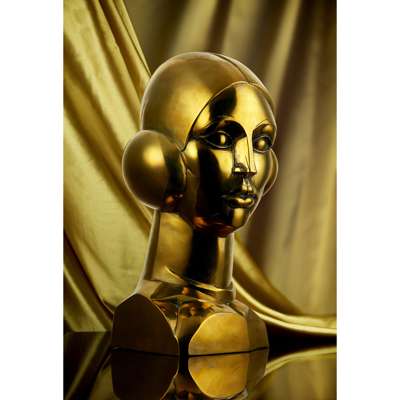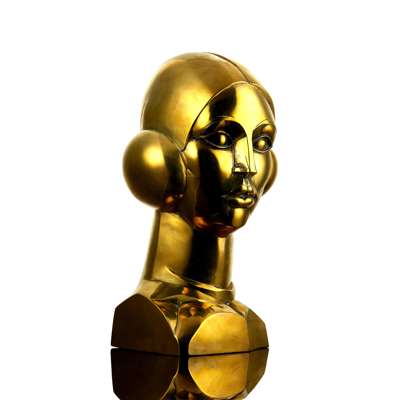
Lot 103

JOHN DUNCAN FERGUSSON R.B.A. (SCOTTISH 1874-1961) §
EASTRE (HYMN TO THE SUN)








Scottish Paintings & Sculpture
Auction: 09 June 2019 at 18:00 BST
Description
Bronze, inscribed with initials, dated 1991 and numbered 5/10
Dimensions
40cm (15.75in) high
Footnote
Note:Fergusson carved the original in plaster in 1927, but kept it under his bed for three years before he found someone who could pay for it to be cast. It is believed only one lifetime cast was made, which is held in the collection of Aberdeen Art Gallery.
A posthumous edition of 6 was cast in 1971 and a second posthumous edition of 10 in 1991, celebrating the Fergusson Gallery project, which opened in 1992. This bust is from the 1991 casting.
In Eastre we see Fergusson bringing together three important strains of early twentieth Century art: Paganism, Primitivism and Modernism.
Eastre is the Saxon Goddess of Spring and of the rising sun. An enthusiasm for Paganism amongst artists and musicians such as Stravinsky had emerged in the early twentieth century. Fergusson was particularly fascinated by Celtic culture and the observance of harmony and unity in nature and the concept of the female form as a symbol of fecundity, renewal and rhythm. In the South of France during the 1920s, the natural environment and bright sunlight resonated with both Fergusson and his partner, the dancer Margaret Morris, who was herself also involved in a ballet performance entitled Hymn to the Sun. The full lips of Eastre and the repeating curves forming the chest, neck and head convey her organic nature.
Together with the revival of Paganism came an interest in non-Western 'Primitive' art which was widespread from around 1907. Fergusson sketched Cambodian and Indian sculpture in the Trocadéro Museum in Paris. The strong features and bold stare of masks made a particularly powerful impression on artists of the time. Here the deeply sculpted eye sockets of Eastre recall African and Oceanic wood carvings.
Two years prior to creating Eastre, Fergusson had embarked on a motoring trip around the highlands. His landscapes from this journey convey the Vorticist movement's love of speed, as well as elements of Cubism in the way that the landscape is broken up into segments. Here, hints of Vorticism and an Art Deco sensibility are found in the polished finish and the bold lines running along the cheek bones, chin and eyebrows which create a dynamic composition. The warm tone of the bronze is evocative of strong sunshine, and a sense of the luxurious.
Eastre represents the perfect homage to both primal nature and a celebration of modern style and energy. It is arguably the most significant sculptural work by a Scottish artist of the 20th Century; its scarcity further enhancing its iconic status.








